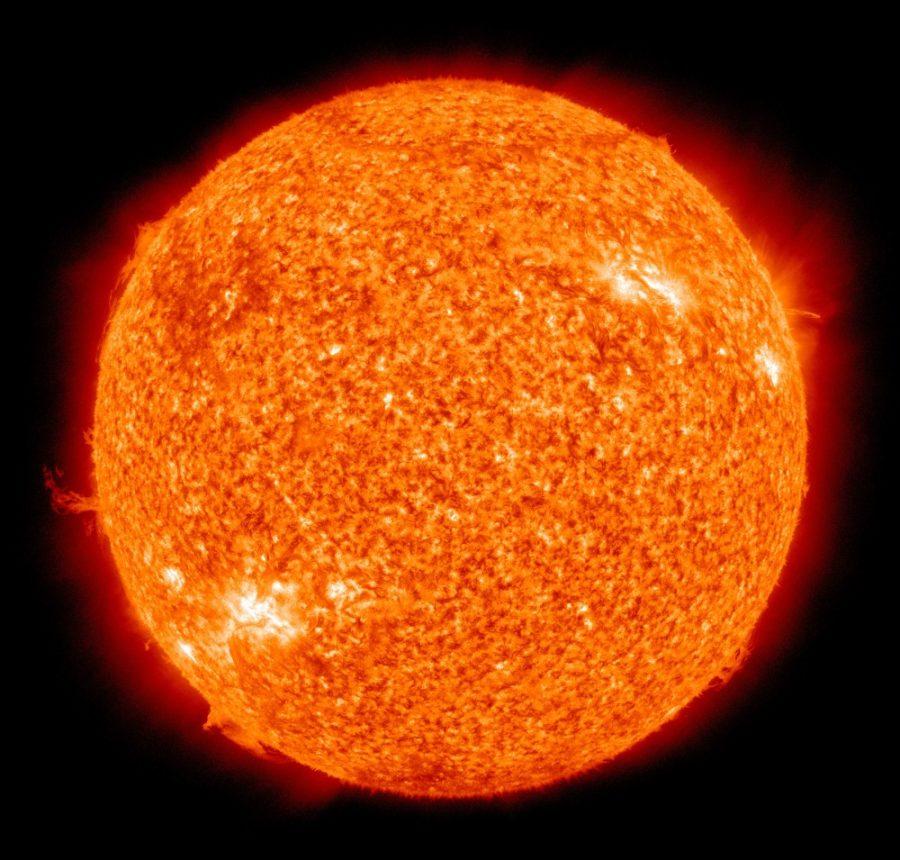It’s another sunny spring day in Tucson, and you’ve decided to lay by the pool and soak up some vitamin D. You have a cold drink, a comfortable pool chair and your favorite Spotify playlist; to an outsider, it might look like the recipe for a perfect day.
But something is wrong with this picture. When you headed to the pool deck this morning, you left your hat and sunscreen inside. And so, what you think is a nice tan developing on your back is actually your skin cells’ DNA being permanently altered.
Forgetting your sun protection might have seemed harmless, but skin cancer is nothing to mess around with.
Long after this “perfect day,” the DNA damage from the sun exposure will stay in your skin cells, said Dr. David S. Alberts, a regents professor and former director of the University of Arizona Cancer Center.
“The damage that [your cells] sustain as a result of even one sunburn stays with you for life,” Alberts said.
Did you know Tucson is the skin cancer capitol of the United States?
Southern Arizona comes in second place behind Brisbane, Australia, for having the highest number of skin cancer incidents in the world, Alberts said.

Location can play a large role in the likelihood of developing skin cancer, said Riley Johnson, a senior majoring in public health. Johnson recently completed an internship with the UA Skin Cancer Institute.
“If you are living in a place that’s closer to the equator or where there’s more days of sunshine than other places, then your daily exposure to ultraviolet rays is going to be higher than probably the average person,” Johnson said.
RELATED: Arizona researchers investigate interdisciplinary health
When the sun’s ultraviolet rays hit and travel down to the epidermis of the skin, which is the outermost layer, your cells send out a signal, Alberts said. Depending on the severity and length of the sun exposure, the signal will either tell the cell to divide or, if it’s already been seriously injured, go into programmed cell death.
But when does a sunburn become skin cancer?
Alberts said there are five million new cases of skin cancer in the United States each year, and this number continues to grow. There are three main types of skin cancer to watch out for:
The first type, basal cell carcinoma, is dangerous but rarely metastasizes, which means it doesn’t usually spread to other parts of the body. This type of cancer is common in people who are regularly exposed to sun, such as farmers and outdoor laborers, Alberts said.
Fortunately, surgery can be used to treat basal cell carcinoma with minimal cosmetic repercussions.
However, squamous cell carcinomas are a different story. While this type of skin cancer also occurs due to repeated sun exposure, it can metastasize and becomes very difficult to treat when it recurs, Alberts said.
Alberts refers to melanoma, the most deadly form of skin cancer, as the “silent killer.”
“When I go to the football games and I see the co-eds out there with nothing—no hats, nothing covering their shoulders—I just wince,” Alberts said. “That sunburn is usually very deep and very severe and stays with the person for the next 60 years, maybe.”
Johnson said there isn’t a “magic number” of sunburns you can get before skin cancer claims its victim. A variety of factors contribute to this, in particular the type of skin you have.
There are six different skin types, with Type 1 being very pale and each type getting darker from there, Alberts said. Type 1 and Type 2 have the highest risk of skin cancer.
RELATED: UA immunologist answers questions on why you should get the flu vaccination
“The best ways to prevent skin cancer are to try to limit your time [in the sun] as much as possible between the hours of 10 a.m. and 4 p.m. and try to seek shade whenever possible,” Johnson said.
However, being outdoors isn’t the only way to get a sunburn. A trip to the tanning salon could have negative consequences that will last longer than your tan.
“There’s a UV index score from 0-11+,” Johnson said. “On a typical summer day in Arizona, the score is 11+, which just means the UV intensity is very high, while for a tanning bed it’s usually about 13.”
One acronym she uses to remind high school and middle-school students of sun protection is “ACE,” which stands for avoid, cover-up and examine.
Alberts also stressed the importance of educating younger people about the dangers of skin cancer, adding that Arizona is the only state with a mandate for sun safety education in K-12 schools.
“There is no other comprehensive cancer center in the United States today that has a skin cancer institute specifically dedicated to eradicating skin cancer; we’re the only one that does this in a way that’s discernible,” Alberts said.
The Skin Cancer Institute, which Alberts helped develop in 2005, is heavily involved in community outreach and public education programs, including Project Students Are Sun Safe and medical student and undergraduate training opportunities.
For a free skin cancer screening on April 8 from 10 a.m. to 2 p.m., set up an appointment with Tucson’s Clinica Amistad at (520) 305-5107.
Follow Hannah Dahl on Twitter.















